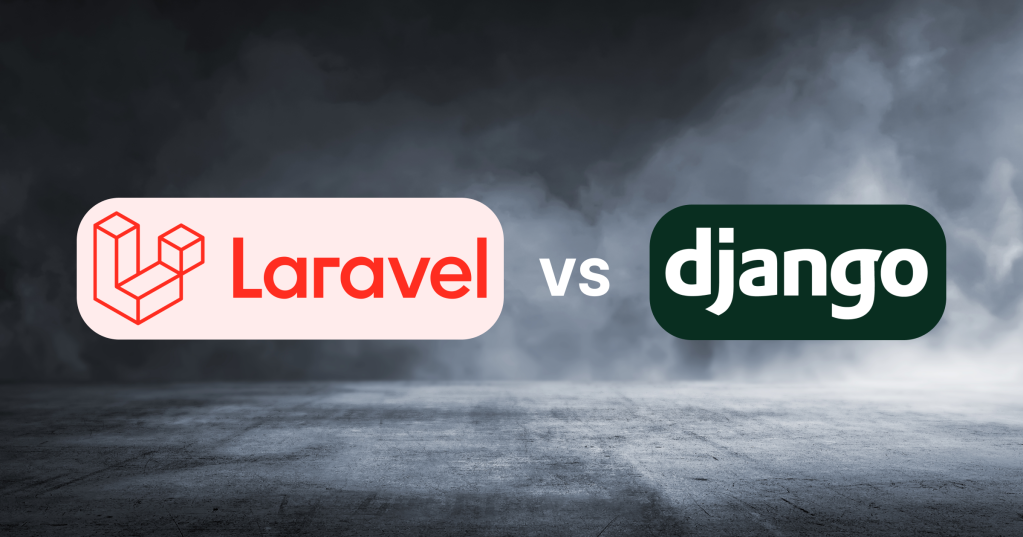Choosing the right backend framework can make or break a software-as-a-service (SaaS) venture. The sheer number of choices—each with unique strengths—means founders must carefully evaluate both technical and business factors. Django (Python) and Laravel (PHP) consistently top recommendations for modern web products, and both have passionate supporters. However, for our SaaS startup’s needs—balancing velocity, reliability, and developer accessibility—Laravel emerged as the clear winner.
In this article, discover not just a feature-by-feature comparison, but also the strategic considerations, key use cases, and “bridge moments” that led us to bet on Laravel. If evaluating the optimal stack for fast-paced SaaS launches, this deep dive provides evidence-driven guidance.
Table of Contents
Understanding Laravel and Django
Laravel
Type: MVC-based, open-source PHP framework developed by Taylor Otwell.
Strengths: Elegant syntax, broad built-in tools for authentication, routing, caching, queueing, extensive package ecosystem, community-backed support.
Ideal for: Traditional web apps, rapid prototyping, SEO-driven products, custom workflows.
Django
Type: MTV-based, open-source Python framework by Adrian Holovaty and Simon Willison.
Strengths: Rapid scalability, security-first by default, AI/ML integrations, ORM-driven modeling, powerful for enterprise and data-heavy platforms.
Ideal for: Large-scale B2B, research/science, AI/ML projects, and systems benefiting from Python’s strengths.
Direct Comparison Table
| Parameter | Laravel (PHP) | Django (Python) |
|---|---|---|
| Core Architecture | MVC (Model-View-Controller) | MTV (Model-Template-View) |
| Base Language | PHP | Python |
| Learning Curve | Steeper for non-PHP devs; elegant syntax offsets it for experienced users | Lower, due to Python’s readability and familiarity |
| Dev Speed | Fast for CRUD and REST APIs, robust generators | Slightly faster for data-heavy/AI-heavy prototyping via Python |
| API Support | Built-in first-class API (JSON out-of-the-box) | Needs add-ons like Django REST Framework |
| Scalability | Great for startups and mid-tier apps; horizontal scaling possible but some PHP limitations | High scalability; excels with cloud/CDN and Python concurrency |
| Security | Robust, covers most OWASP threats; slightly less “secure by default” than Django | Superior out-of-the-box security, strong user auth and management |
| Community/Ecosystem | Massive—109k+ domains, many packages, vibrant package scene | Extensive Python/data/ML community, especially strong in science/enterprise |
| Microservices | Native support (can use Lumen for lightweight services) | Highly compatible, rapid deployment, secure APIs |
| Hosting/Deployment | Shared/VPS/cloud support everywhere, easy CI/CD, wide hosting compatibility | Supported on all major clouds; can integrate advanced analytics, AI |
Key Reasons We Chose Laravel
1. Developer Productivity and Experience
Laravel’s philosophy—focus on developer joy—resonated with our vision to ship reliably, at speed. Its expressive syntax, artisan CLI, powerful generators, and Blade templating meant our product team could move from idea to working code with fewer blockers.
Onboarding: Easier for web devs new to backend engineering (thanks to PHP’s low barrier and Laravel’s documentation).
Tools: Built-in authentication, REST/GraphQL support, scalable queue jobs, and mail logic—all out of the box.
2. Full-Stack Flexibility
In SaaS, real-world requirements change quickly. Laravel’s modular nature (middleware, service providers, event broadcasting, etc.) let us prototype in days—not weeks.
API-first: Laravel’s native JSON APIs simplified mobile app integration.
Frontend: Laravel mixes beautifully with Vue/React and offers Breeze, Jetstream, and livewire for SPA/hybrid needs.
3. Ecosystem and Package Power
For startups, leveraging open-source saves months of custom code. Laravel’s package system (composer, Packalyst) offered robust, maintained integrations spanning payments (Cashier/Stripe), social auth, and multi-tenancy—a SaaS must-have.
Community: Huge artisan base and third-party support means bugs get fixed and feature requests are heard.
Resources: Extensive documentation and community tutorials reduced team ramp-up time.
4. Cost and Infrastructure Efficiency
PHP’s wide compatibility meant we could deploy on affordable hosting with scalable options (AWS, Azure, DigitalOcean, etc.). For early-stage SaaS, minimizing DevOps pain and cost was a tangible win.
5. Business/Market Fit
Our SaaS targeted industries where PHP dominates legacy and modern deployments (e-commerce, real estate, education). Laravel’s success in these verticals gave investors and clients peace of mind about longevity and support.
Where Django Shines—And Why We Paused
Django is, by all measures, an outstanding choice—especially for data-driven and enterprise platforms:
Security: Defaults to high standards for auth and anti-CSRF protections.
Scalability: Performs exceptionally in sectors requiring cloud elasticity, AI integration, or scientific computing.
Python’s Power: For AI/ML-powered SaaS, getting Python “for free” is a huge win.
However, for our SaaS, the incremental productivity gains, the built-in features, and the larger talent pool of PHP/Laravel engineers led us to sideline Django for this iteration.
Challenges We Faced with Laravel
No tech is flawless, and Laravel presented its own hurdles:
Performance at scale: Required optimization for very high-traffic endpoints (solved with caching, Redis, tuning).
Learning curve for Python-native devs: Some onboarding friction for those new to PHP syntax.
Multi-tenancy: Not out-of-the-box, but possible via community packages and careful architecture.
Technical Highlights: Feature-by-Feature Comparison
| Feature | Laravel | Django |
|---|---|---|
| Authentication | Built-in (Fortify, Jetstream) | Built-in, robust default |
| ORM/Database | Eloquent ORM (flexible, extensible) | Django ORM (mature, Pythonic) |
| API Creation | Out-of-the-box API routes (routes/api.php) | Needs Django REST Framework |
| Background Jobs | Native queue/support (Horizon) | Celery (external package) |
| Caching | Available (Redis, Memcached, file) | Available (memcache, redis) |
| Templating | Blade (Laravel’s own) | Django Templates |
| Testing | Built-in PHPUnit | Built-in Python unittest |
| Real-time | Echo and WebSockets support | Channels (add-on) |
| Documentation | Clear, fast-evolving | Comprehensive, Pythonic |
| DevOps | Simple on shared, scalable on cloud | Modern CI/CD; many tools |
Case Study: Scaling Laravel in SaaS
Our MVP launched in two months with Laravel, integrating Stripe billing, team roles, and REST APIs consumed by both web and mobile platforms. Post-launch, we incrementally added real-time notifications, webhooks for integrations, and expanded our analytics features. Laravel’s modularity let us do all this without re-architecting our stack, accelerating feedback cycles and feature iteration velocity.
For traffic spikes, tools like Horizon, Forge, and Envoyer let our team scale horizontally with zero downtime deploys—keeping the SaaS experience smooth.
Common Questions: Laravel vs Django for SaaS
1. Which is faster for MVP—Laravel or Django?
Both are fast for CRUD apps. Django may have a slight edge for rapid prototyping data-heavy or Python-centric products, while Laravel wins for CRUD/REST apps with rapid deployment needs and built-in features.
2. Which is more secure by default?
Django wins by default (out-of-the-box protections), but Laravel can be configured to similar levels with its security features.
3. What about developer availability?
Laravel has a broader talent pool, especially among PHP/web-native engineers. Django’s developer base is strong among Python/data-oriented devs.
4. Which is best for AI/ML-powered SaaS?
Django integrates seamlessly with Python’s AI/ML libraries and is preferable if advanced analytics or machine learning is core.
5. Is Laravel suitable for microservices?
Yes—using Lumen or splitting into modular services, Laravel is microservices-ready.
6. What about documentation and support?
Both have strong docs; Laravel’s is beginner-friendly but less detailed than Django’s exhaustive, example-led guides.
Conclusion
Choosing a framework is as much about people, workflow, and market-readiness as it is about technical prowess. Laravel enabled our SaaS team to move fast, leverage a healthy community, utilize a wealth of pre-tested packages, and deploy reliably at startup scale. Django—while powerfully secure, scalable, and ideal for Python-native/AI-first platforms—didn’t deliver the out-of-the-box developer velocity and business fit our SaaS startup required in the early growth phase.
Whatever a startup’s focus, making the right choice means deep technical understanding and honest assessment of the team’s skillset, business objectives, and ecosystem realities.












